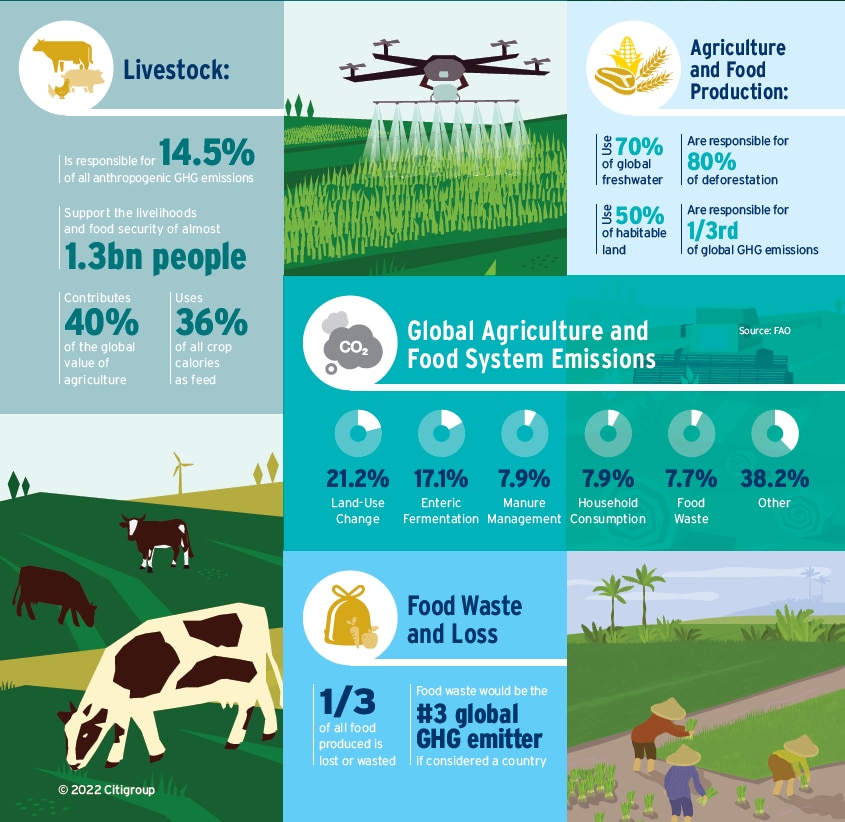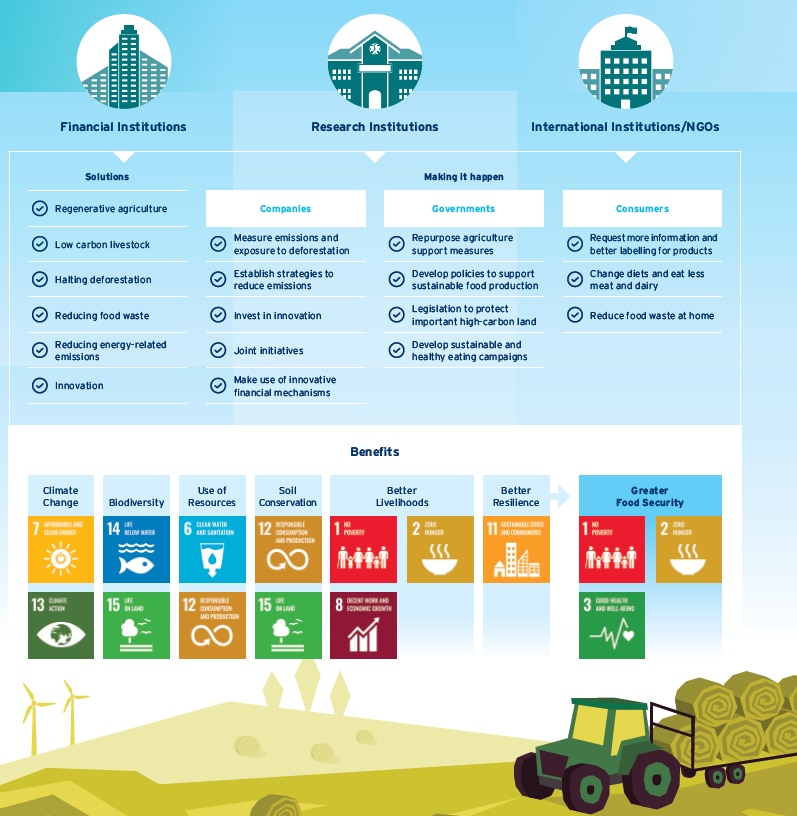Food and Climate Change

What comes to mind in a discussion about greenhouse gas (GHG) emissions? A dirty factory smokestack spewing out brown smoke or a car idling in traffic on a highway pumping out exhaust fumes? Looking through media articles on the effects of GHG emissions on climate change, the associated images are typically of cars, buses, and factories polluting the environment. These images link the use of fossil fuels with activities that endanger the environment. From a public policy standpoint, mitigation measures for emissions also focus on fossil fuels. Government actions to reduce climate footprints focus on renewable energy to replace coal and gas-powered electricity generation and electric vehicles to replace internal combustion engines.
Only occasionally, it seems, the focus strays from fossil fuels to methane emissions from cows. But images of green farmland are not what comes to mind when thinking about harmful emissions. Unfortunately, the global food system— agriculture and food production collectively — is responsible for one-third of global greenhouse gas emissions. This means a global solution to climate change must also address how the world produces and distributes food to its population. As the population of the world and the demand for food increase, the need to find solutions for mitigating emissions from the global food system becomes even more important.
The two largest sources of emissions from the global food sector are from deforestation, particularly land clearing for crop production or pasture for cattle farming, which release carbon dioxide; and enteric fermentation, which emits methane during the production of meat. Emissions are also found through the full food supply chain, including in processing, transportation, and household consumption.
SOLUTIONS FOR MITIGATING EMISSIONS
Given the complexity of the global food ecosystem — not just in overall size of the system but in the number of players — there is no single solution to reducing emissions. In the report that follows, we look at six potential solutions to this challenge. These include (1) regenerative agriculture, (2) low carbon livestock, (3) halting deforestation, (4) reducing food waste, (5) investing in low carbon technology to decarbonize energy-related emissions, and (6) investing in innovation.

Implementing just the first four solutions noted above could lead to emissions mitigation of between 6.9 gigatonnes of carbon dioxide equivalent (GtCO2e) and 8.1 GtCO2e, or between 58% and 68% of current levels of equivalent emissions from the global food system. This would be an enormous step towards reducing emissions to net zero.
COORDINATION IS KEY
Bringing mitigation solutions to life will require coordination between companies, governments, and consumers. Financial institutions will also play a key role by providing options to meet the estimated $300 billion to $400 billion required for this transformation. Research organizations and international institutions also have an important role in supporting change.
Authors: Elizabeth Curmi,Jason Channell,Ying Qin,
The Global Food System and Climate Change

Finding Solutions and Taking Action
